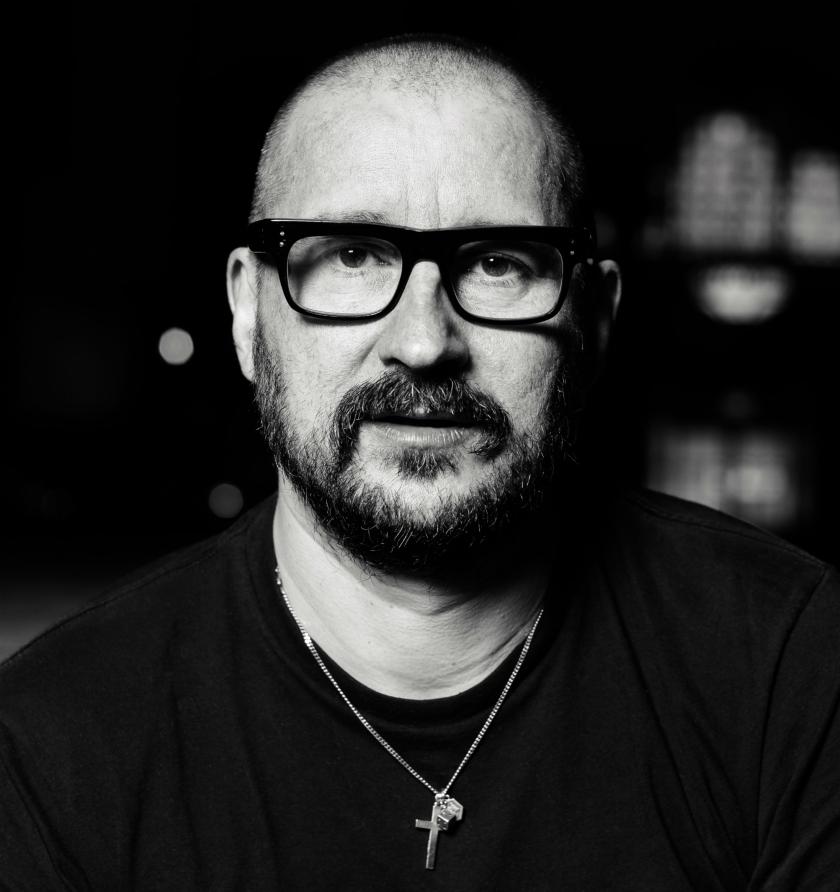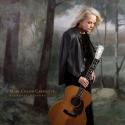Although this evening began with an introduction by film director Ben Wheatley (responsible for Clint Mansell’s latest soundtrack commission, High-Rise), Mansell’s most frequent collaborator has been Darren Aronofsky. Among the movies they’ve fashioned together is 2014’s Noah, the music from which provided tonight’s opening salvo.
Giant, menacing chords lumbered across a sparse soundscape with a pulsing clash of cymbals from Eric Gardner on drums. Ululating, haunting electronic keyboards were played by Clint Mansell himself. The sound clotted into a dense, menacing texture with sustained strings, played by the Sonus Quartet — including Vanessa Freebairn-Smith on cello, and Kathleen Sloan on violin — which were like a trapped nerve, agitating and edgy. The drums thundered under the eerie wailing of the keyboards and an hypnotic figure on the guitar played by Mike Fonte. The pace built up with elegant desperation, boiling to a climax.
'Requiem for a Dream' had an unnerving trapped-animal quality
The music from Pi (another Aronofsky film) conjured buzzing, roiling and stinging synth chords that bounced and roared and battered while a subterranean metallic beat, courtesy of Gardner’s drums and Clint Walsh on bass guitar, rolled out like an extruded sheet of steel. A ragged chainsaw blade of noise sliced through the ensemble’s music, then abruptly cut off.
Moon, by contrast, provided gentle and insistent keyboards yielding to eerie isolated wails that evoked the isolation of the film’s protagonist. A duet between Clint Mansell on electronic keyboards and Carly Paradis on piano gave way to deep, dark chords, a cavernous gape of sound that was filled by taut, dry drumming from Eric Gardener. The beat was mesmerizingly suspenseful and minimalist. The Sonus Quartet’s keening strings underlaid the spare beauty of Paradis’s piano. Vanessa Freebairn-Smith’s cello was elegant and rich in this lonesome, meditative piece.
High-Rise took the set in a new direction, graceful and baroque in style. Decorously agitated, the music developed into an anguished modernism dominated by the string section with punchy drumming from Gardner, creating space for sing-song electronic keyboards from Mansell and huge, reverberating piano chords from Paradis, beautiful and brutal in equal measure. Clint Walsh shifted from bass to synth, contributing to a UFO wail of electronics, accelerating to a dizzying frequency. The intoxicating oscillation died out and the strings played a funeral song in its honour. A powerful, soaring and sustained piece, possibly the most impressive of the evening, this was a feast of virtuosity from the violins (Tom Hiddleston in High-Rise, pictured below).
 Requiem for a Dream (yet another Aronofsky film) had an unnerving trapped-animal quality. The strings sounded like a component in an out-of-control machine that ran slowly down then accelerated again in a cryptic cycle. The ensnared urgency of the piece infected the listener, with piercing sonar squeals from the keyboards while Gardner’s drums and Walsh’s bass were like a giant foot coming down. The knife-sharpener shriek of the keyboards and the raw sawing of the strings worked in a call and response pattern. When the pace slowed and a calm melody emerged, it was welcome solace.
Requiem for a Dream (yet another Aronofsky film) had an unnerving trapped-animal quality. The strings sounded like a component in an out-of-control machine that ran slowly down then accelerated again in a cryptic cycle. The ensnared urgency of the piece infected the listener, with piercing sonar squeals from the keyboards while Gardner’s drums and Walsh’s bass were like a giant foot coming down. The knife-sharpener shriek of the keyboards and the raw sawing of the strings worked in a call and response pattern. When the pace slowed and a calm melody emerged, it was welcome solace.
Clint Mansell switched to guitar on Black Swan, where his adaptation of Swan Lake took us to a sound-world similar to High-Rise. The formal, poignant beauty of piano and strings were set against dark sweeps of Walsh’s electric bass and Mike Fonte’s guitar in music that had the circularity of a folk dance. As the electronics crept in, this was like Tchaikovsky invaded by aliens.
The mood shifted again with The Fountain, which was utterly different and quite lovely — ecstatic and odd, with a trippy, whale-song sound, providing light and colour against the brooding darkness of many of the other selections. This added another dimension to a compelling evening of music of impressive individuality.















Add comment